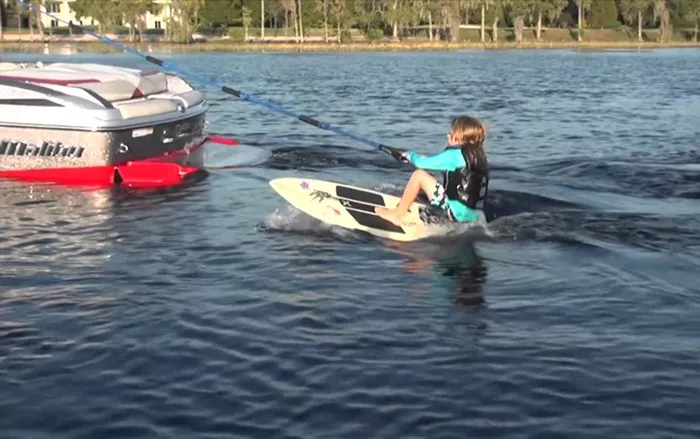Wake surfing is an exhilarating water sport that combines elements of surfing and boating. Unlike traditional surfing, where surfers ride ocean waves, wake surfers ride the artificial waves created by a boat. This unique sport allows enthusiasts to enjoy the thrill of surfing without the unpredictability of ocean conditions. In this article, we will explore the fundamentals of wake surfing, including its history, techniques, equipment, and safety measures.
The History of Wake Surfing
Wake surfing originated in the late 1980s and early 1990s when surfers began experimenting with riding the wakes created by boats. As boat technology advanced, particularly with the introduction of inboard engines that produced larger wakes, wake surfing gained popularity. The sport evolved from being a niche activity to a mainstream water sport, attracting participants of all ages and skill levels.
What Is Wake Surfing?
Wake surfing involves riding a board on the wake generated by a boat while being towed at slow speeds, typically between 10 to 12 miles per hour. This speed allows the rider to maintain balance and control while enjoying the ride. Unlike wakeboarding, where riders are strapped to their boards, wake surfers ride without bindings, providing greater freedom of movement.
Equipment Needed for Wake Surfing
To get started with wake surfing, you will need specific equipment designed for safety and performance:
Wakesurf Board: Boards come in various shapes and sizes. The most common types are:
Surf Shape: Ideal for beginners due to its stability.
Skim Shape: Suitable for advanced riders looking to perform tricks.
Hybrid Shape: Combines features of both surf and skim boards.
Life Jacket: A properly fitted USCG-approved Type III life jacket is essential for safety.
Wakesurf Rope: This rope is thicker than a wakeboarding rope and often has a smaller handle to prevent rope burn.
Boat: An inboard boat is crucial for wake surfing as it creates a safe environment away from exposed propellers.
Getting Started with Wake Surfing
Preparing for Your First Ride
Choose the Right Boat: Ensure you have access to an inboard boat equipped for wake surfing. The boat should be capable of creating a substantial wake without excessive speed.
Wear Safety Gear: Always wear a life jacket designed for water sports. This ensures your safety while you learn.
Get Comfortable in the Water: Before attempting to ride, practice floating and positioning yourself in the wake’s pocket or “sweet spot.”
The Deep Water Start Technique
Getting up on a wakesurf board can be challenging for beginners.
Follow these steps for a successful start:
Position Yourself: Hold the tow rope handle with both hands while lying on your stomach on the board. Your feet should be positioned perpendicular to the boat.
Relax and Float: Allow your body to float with knees slightly bent.
Signal the Driver: Use a predetermined signal (like a thumbs-up) to indicate you’re ready.
Engage the Rope: As the boat starts moving, let it pull you forward while keeping your arms straight and knees bent.
Find the Sweet Spot: Allow your feet to come onto the board as you balance over it.
Stand Up Gradually: As you gain speed, slowly rise into a standing position while maintaining a crouched stance for stability.
Release the Rope: Once you feel comfortable riding in the wave’s pocket, let go of the rope and enjoy the ride.
Techniques for Maneuvering
Once you’re up on your board, mastering control is key:
Weight Distribution: Shift your weight between your front and back foot to control speed:
Press down on your front foot to accelerate.
Lean back on your heels to slow down or stop.
Turning Techniques:
To turn left or right, lean in that direction while maintaining balance.
Use small adjustments in weight distribution to carve through the wave effectively.
Performing Tricks: Advanced riders can attempt tricks such as spins and jumps by using momentum from the wake and shifting their weight strategically.
Safety Considerations
Safety should always be a priority when participating in wake surfing:
Use Proper Equipment: Ensure all gear fits correctly and is designed for wakesurfing.
Maintain Distance from the Boat: Always stay at least 15 feet behind the boat to avoid accidents with the propeller.
Communicate with Your Driver: Use hand signals to communicate speed adjustments or if you’re ready to start or stop.
Check Weather Conditions: Avoid wakesurfing in adverse weather conditions that could affect visibility or water safety.
Conclusion
Wake surfing offers an exciting way to enjoy water sports without relying on natural waves or complex equipment setups like traditional surfing or wakeboarding. With proper preparation, technique, and safety measures, anyone can experience the thrill of gliding across water while being pulled by a boat’s wake. Whether you’re looking for a new hobby or seeking an adrenaline rush, wake surfing provides endless opportunities for fun and adventure on the water.
Related topics:

